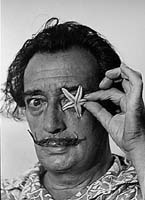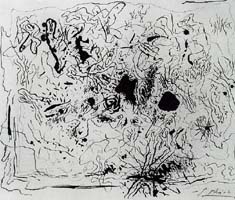|
Angel Art, the worlds greatest manifestantsSalvador Dali
Images of concrete irrationalityThe next statement of Dali may lead the ignorent visitor pretty far away from Angel Art and its aspect transcendence and automatism. Hence, the idea may come to mind, of Dali being the enfent terrible of Angel Art; just because publications are not translucent in that respect and do not give out as much information as we would like to determine the relevance of transcendence and automatism supporting the creation of his wonderful art. With Dali, transcendence seems not to be the correct word. Inducing hallucinations ís where its at with Dali. Dali: "All my ambition on the pictorial level consists of putting on canvas, with the most imperial fury of precision, the images of concrete irrationality." Angel Drawing from the Master of Surrealism
Subconscious versus ReasonAs an art student in Madrid and Barcelona, Dalí assimilated a vast number of artistic styles and displayed unusual technical facility as a painter. In the late 1920s, two events brought about the development of his mature artistic style: 1. His discovery of Sigmund Freud's writings on the erotic significance of subconscious imagery; 2. His affiliation with the Paris Surrealists, a group of artists and writers who sought to establish the "greater reality" of man's subconscious over his reason. Paranoiac Critical




To bring up images from his subconscious mind, Dalí began to induce hallucinatory states in himself by a process he described as “paranoiac critical.” The world's best-known Surrealist artist.Once Dalí hit on this method, his painting style matured with extraordinary rapidity, and from 1929 to 1937 he produced the paintings that made him the world's best-known Surrealist artist.
|